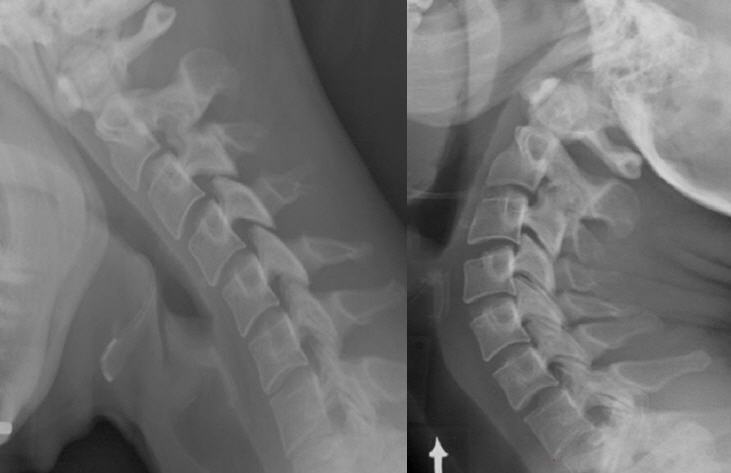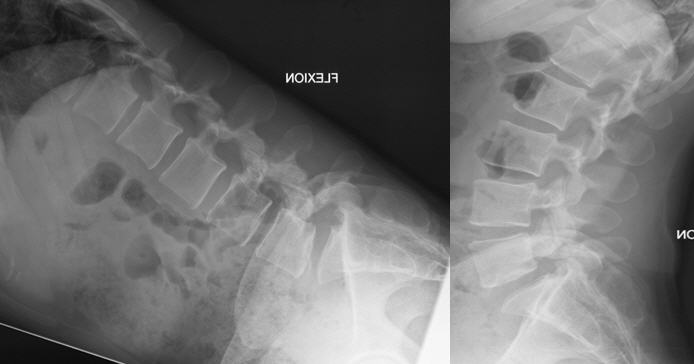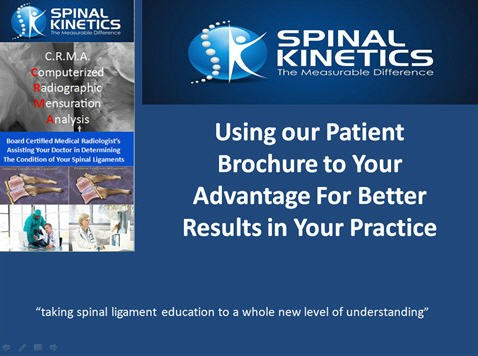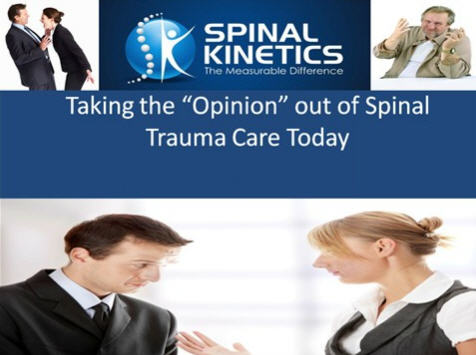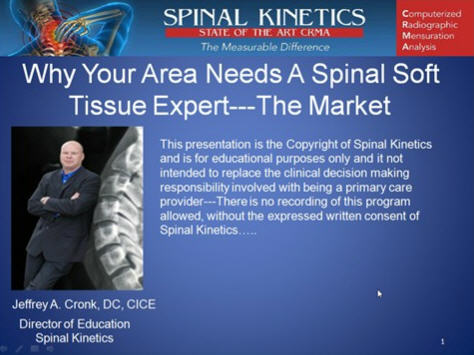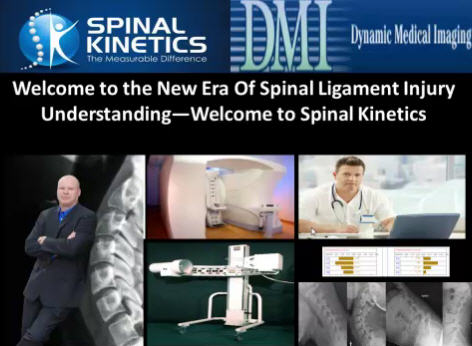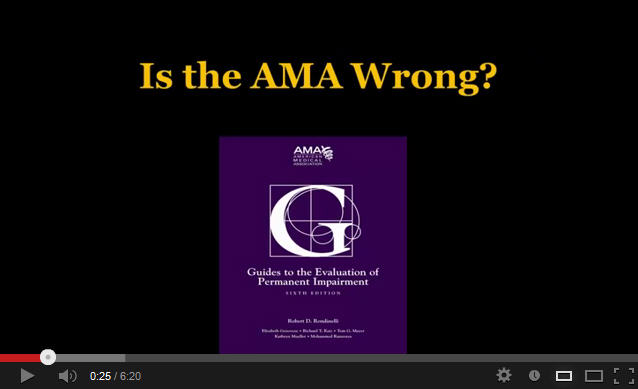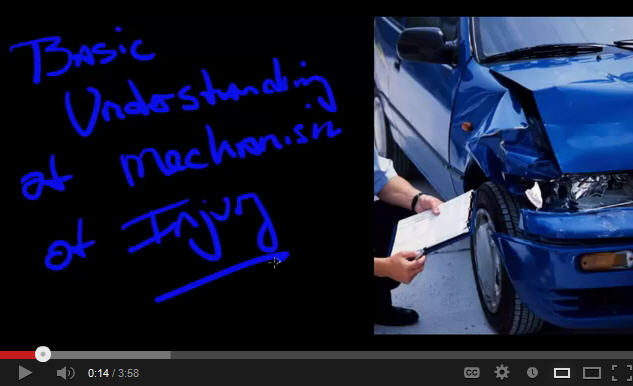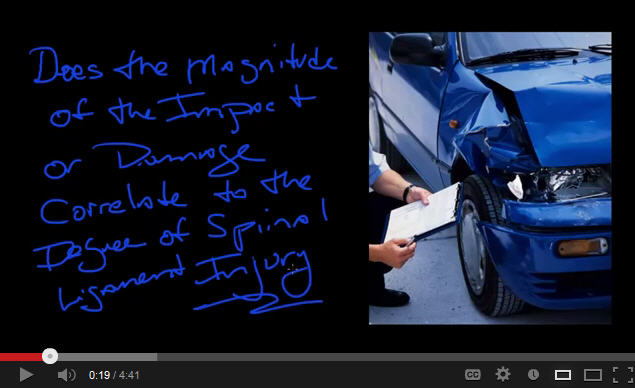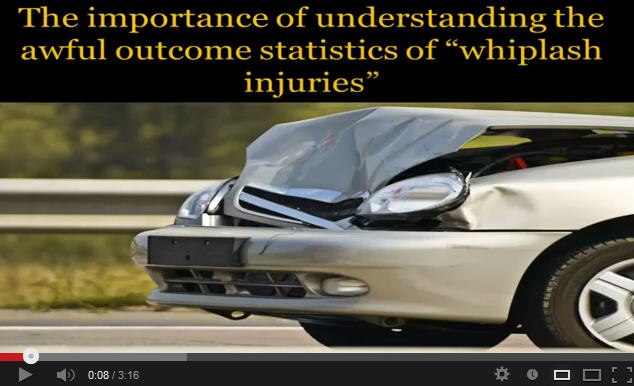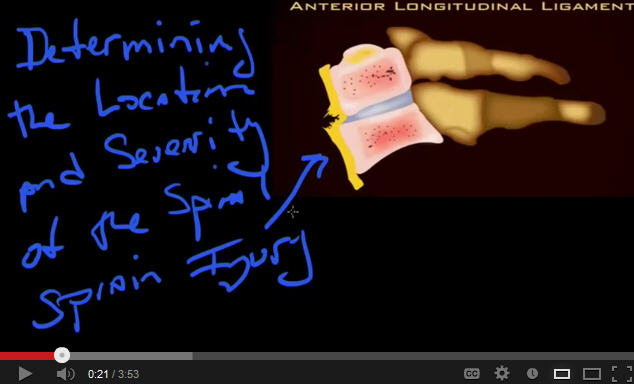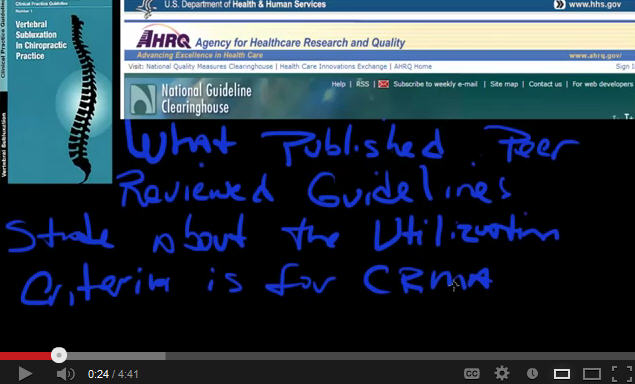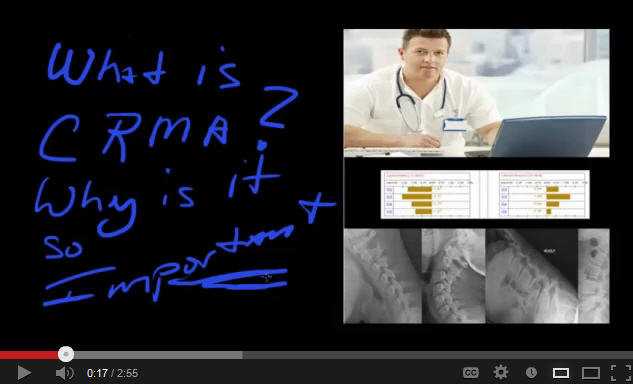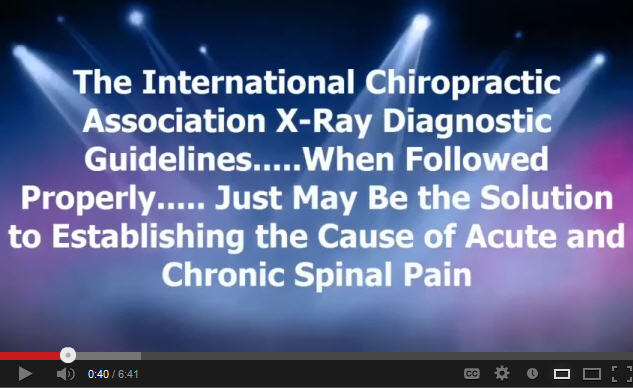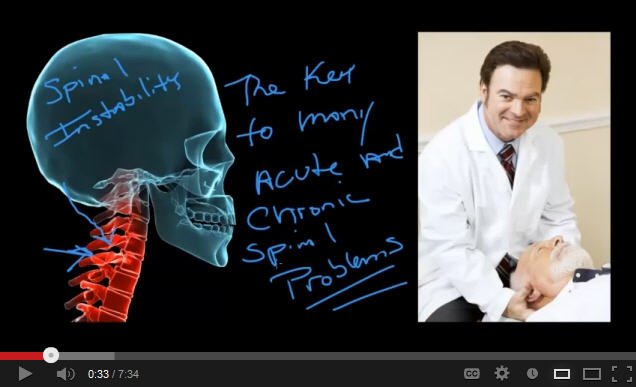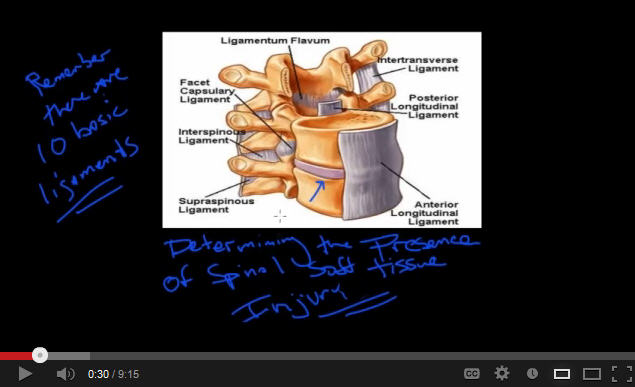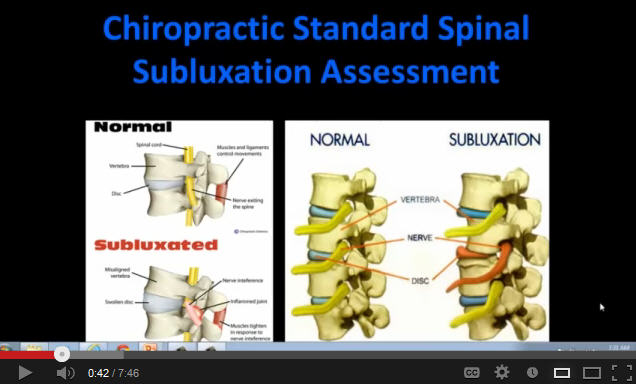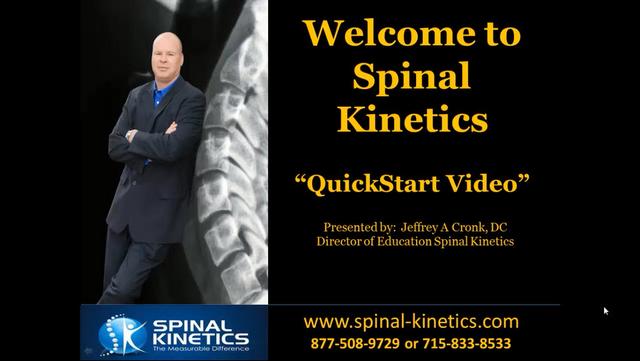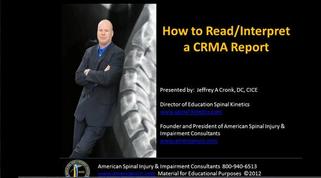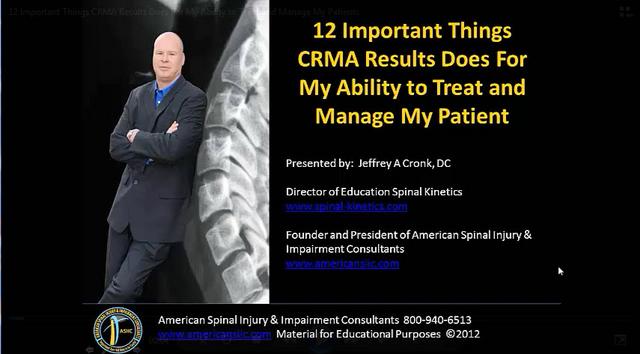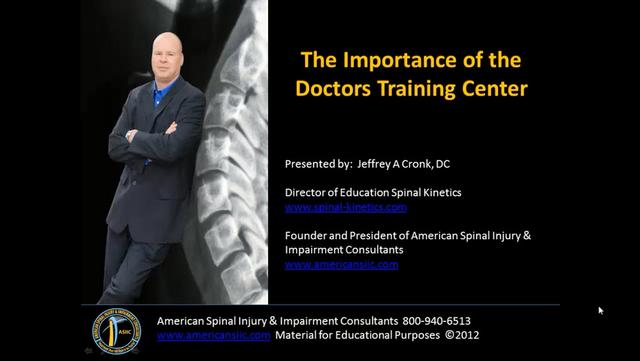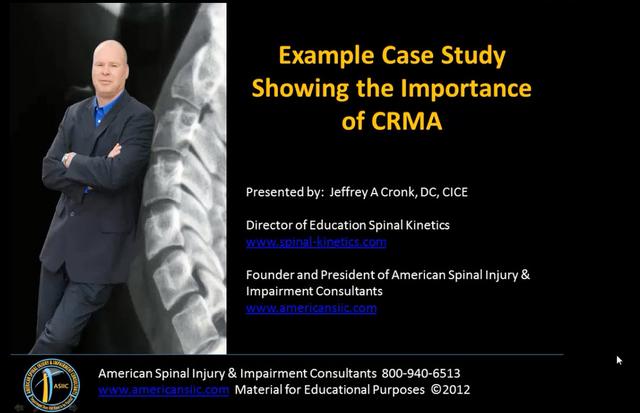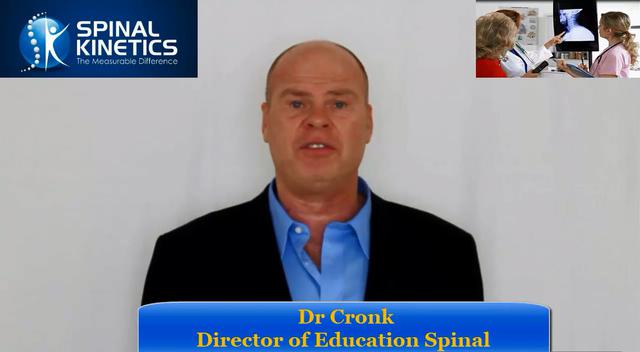This portion of our site houses our training videos. Each Video is designed to simplify understanding on that topic. All of our educational materials are designed with one purpose in mind and that is to educate the provider so that they can get better results with the patients that they serve.
To access the video you simply clink on the link and when the video comes up just click on the play arrow.
These videos are for all parties to get better educated; provider, insurance adjuster, attorney or patient.
This information and website should not be substituted for medical, legal, or healthcare advice. Any and all health or legal concerns, decisions, and actions must be done through the advice and counsel of an appropriate professional who is familiar with your updated medical history and situation.
...Just Click on the Image or the Title to Direct it to Play...
Below are videos posted on our YouTube Channel--Just Click on the Image
Was the American Medical Association wrong to set up an objective and standardized way to evaluate and document the severity of spinal injuries? Was that the wrong thing to do? Was it wrong to create a system that allows doctors to distance themselves from utilizing misleading, false of incomplete information in order to determine and document the severity of such injuries? We leave it up to you to decide?
This is a basic video of the damage that is left behind in the spine when the mechanism such as a auto accident damages the human spine. To few doctors today know how to properly work up these lesions, which puts patients at risk for long term residual complaints and cost insurers dearly in long term care. It is our hope that this video helps to simplify the process and allows patients to make sure their doctor understands how to work these conditions up.
In this video we will explore the question, does the magnitude of the impact, determine the severity of the injury? Rather than research lets review what some of the top authoritative websites have to say about this question. Their position tells us that there is no correlation.
This is a short video showing a small sample of the poor outcomes associated with "whiplash like" spinal ligament injuries, otherwise known as spinal sprains. At Spinal Kinetics we believe that delayed diagnosis may be responsible for these results. We also believe that earlier and more accurate diagnosis may lead to significantly improved outcomes and significant cost reductions.
Spinal Ligament Injuries are quite common and can be very debilitating to the patient that receives them. There seems to be a lack of understanding that ligament injuries cause joint laxity to occur. This laxity can be located and quantified (measured) for more accurate clinical diagnosis of the condition.
Today doctors have tools that improve the accuracy of the diagnosis so that patients have a better chance of reducing the risk of long term chronic pain and other ill health effects that are common with spinal injuries.
This is precisely why Computerized Radiographic Mensuration Analysis is such a vital clinical tool!
Here is what Published Peer Reviewed Guidelines State about the utilization criteria for Computerized Radiographic Mensuration Analysis. No doctor should order any testing procedure for any patient unless they know what the test does and how the results improve their ability to program the patient for a more effective and efficient treatment plan.
These guidelines show how the "clinical necessity" for utilization is simply if the provider feels that the spine was damaged. This test helps to determine the amount and location of spinal ligament damage. This of course can be key to patient treatment and patient results both in the short term and in the long run.
CRMA or Computerized Radiographic Mensuration Analysis, like an EKG, can help doctors determine the amount of spinal soft tissue damage that there may be with spinal injury. Clinical Guidelines for utilization state its purpose or clinical necessity to to help the doctor determine the amount of spinal damage that there is when the spine is injured in some way. Any doctor that treats spinal injuries can simply order this test.
With proper diagnosis, patients can now get the proper care that they need and a reduction in the epidemic of chronic spinal pain patients can begin.
To many patients today are walking around in chronic or acute spinal pain and they simply have no answers to the question of why? Why am I in so much pain? Many of these same patients are involved with doctors who have identified any physical cause to their condition.
This video shows both doctor and patient what the International Chiropractic Association has stated can be diagnosed with the proper understanding of this technology.
No longer should any patient walk around un-diagnosed. Without an accurate diagnosis, the chance of success of reducing painful spinal conditions is seriously reduced. Follow the ICA Guidelines and find the spinal instability that may be causing the problem!
This video will show any person the basics of what spinal instability actually is? It will also begin to show you how it is assessed. Spinal instabilities just may be the most common cause of both acute and chronic spinal pain. If you have either of these conditions, it is recommended that you seek the help of doctors who are very knowledgeable on this condition.
This video will quickly show the most contemporary method of determining spinal soft tissue injury using Radiography (X-Rays) and Computerized Radiographic Mensuration Analysis. This procedure should not be missed by anyone that has a suspected spinal ligament injury; such as a spinal sprain or a "whiplash" type injury.
This video goes over the current contemporary method of a Chiropractic Spinal Subluxation Assessment. The most reliable method also happens to be the most contemporary method of assessing for spinal soft tissue injury as well as spinal instabilities, Computerized Radiographic Mensuration Analysis is currently the most accurate, reliable, and repeatable way to do all three.
This is a QuickStart Video for new users to our service---Please review this video as it will save you and your staff a lot of time. The information is relevant for any provider type. This video is 21:45 minutes.
This video goes over how to interpret a CRMA Report. These are assisting you in determining the severity and the location of the patient spinal ligament injuries and they need to be understood. This video is 15:36 Minutes.
This video goes over 12 simple ways that the CRMA Reports findings can help to manage your patients treatment with a higher level of effectiveness. This is one of the most benefitical testing procedures in spinal care today---but no provder should use it unless you know how the results will help you with your patient---this video is 18:54 Minutes
Today there is a great need for providers who understand and can become spinal ligament injury specialists. For those who are new to this field or who have been around it for awhile and want to improve---there is the Provider Training Center through the American Spinal Injury & Impairment Consultants. This video explains that service. The video is 9:18 Minutes
This is a case example that will walk you right through proper utilization of a CRMA Report and how this diagnostic tool can really assist the doctor with patient management, by one identifying the actual condition that they have. Why should patients have to work so hard to get properly diagnosed? This video is 9:38 Minutes
To get to the area where the doctor can sign up for the Provider Training Center---Simply Click on the Image Below and you will be taken to the American Spinal Injury & Impairment Consultants Website
